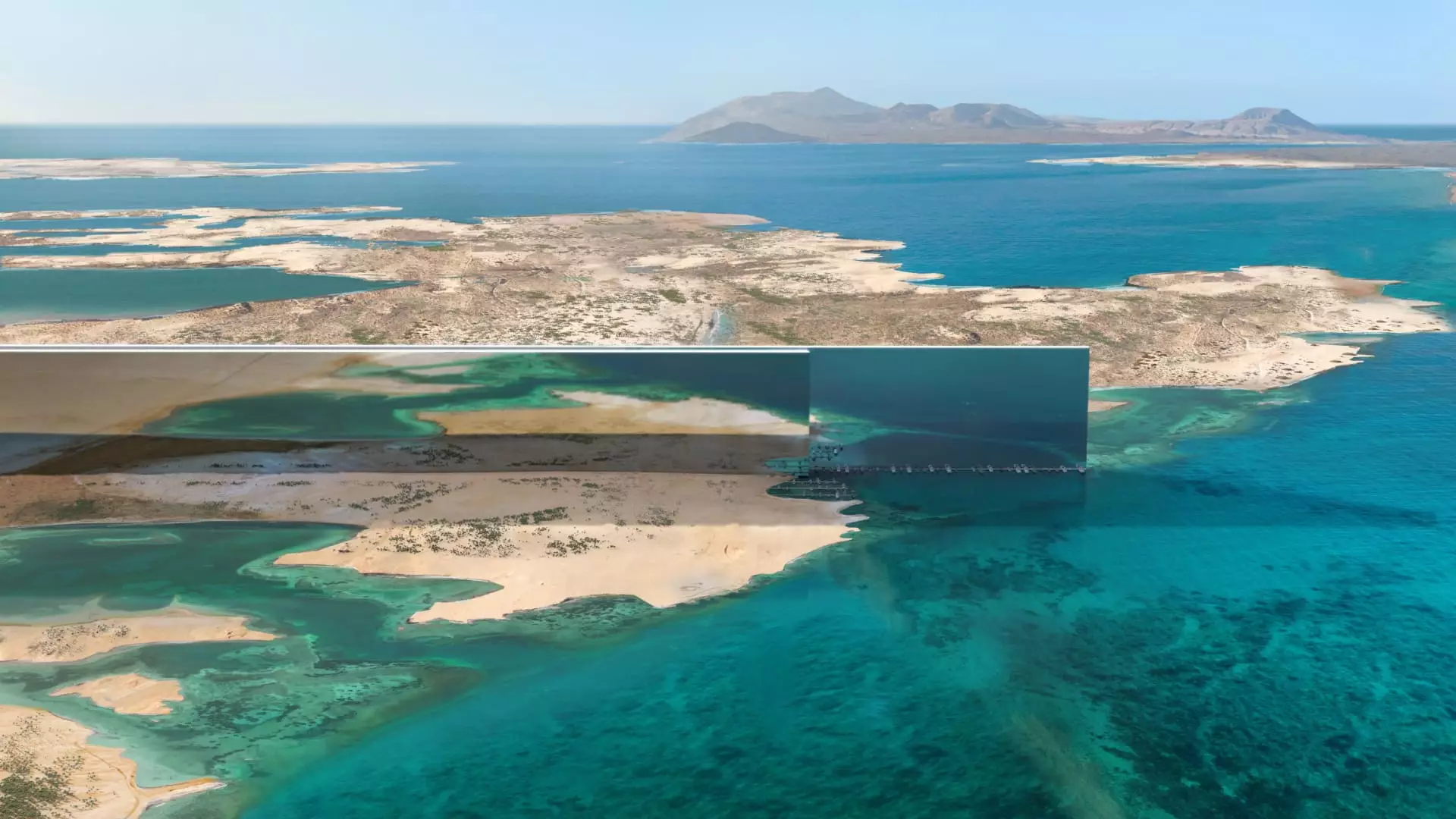In an era where nations stake their claims in the realm of the impossible, it’s easy to admire bold, outlandish visions such as Saudi Arabia’s Neom. Designed to be a city of the future, with sprawling skyscrapers and high-tech infrastructures, it promises to redefine urban living. But beneath the shiny veneer lies a crucial question: are these grand ambitions grounded in reality, or are they just mirages that lure nations into financial quagmires?
The core problem with projects like Neom is the overenthusiastic glorification of technology and innovation, often at the expense of practical feasibility. While the concept of a hyper-modern city nestled within the desert captures imagination, the reality is far more complex. The sheer scale—costing upwards of $1.5 trillion—and the audacity of building a city between two identical skyscrapers that are over a thousand feet tall seem almost fantastical. That these projects are powered by optimistic forecasts and techno-utopian dreams makes their eventual failure all the more inevitable when these illusions are shattered by harsh economic realities.
Economic Realities vs. Futuristic Promises
The Saudi government’s reassessment of The Line highlights an uncomfortable truth: the economic and financial sustainability of such megaprojects remains in question. Oil revenues, historically the backbone of the kingdom’s economy, have shown signs of decline, especially as global energy markets shift and oil prices fluctuate. The drop from $100 a barrel to around $70, while seemingly marginal, signifies a much larger re-evaluation of affordability for these enormous projects.
It’s not just about costs; it’s about the strategic value of such investments. When the price of oil is high, long-term mega developments can seem manageable—justified by a boundless future of wealth and growth. But as prices slide, the economic logic unravels. Countries, even ones as wealthy as Saudi Arabia, must confront the reality that habitually extravagant spending on projects like Neom becomes unsustainable. The question then becomes whether these projects are merely vanity projects adorned with technical jargon, or genuine attempts to revolutionize their economies.
The Disappointment of Over-Optimism
One of the most troubling aspects of Neom’s saga is the culture of over-optimism pervasive among consultants and project leaders. There are serious concerns that many involved in planning and forecasting have succumbed to a “yes-man” mentality, presenting rosy projections to keep stakeholders satisfied. This fosters an environment where reality is sacrificed for the sake of maintaining investor confidence, which only fuels disappointment down the road.
Such sanguine forecasts are double-edged. They attract funding and international support, but they also set unrealistic expectations that cannot be maintained. When these projections inevitably prove overly optimistic—particularly regarding the technological feasibility and economic sustainability of the project—the fallout can be severe. Trust erodes, credibility diminishes, and the once-ambitious vision begins to look more like a house of cards.
The Doors Open for Strategic Reassessment
The decision to launch a strategic review of The Line indicates a shifting attitude within the Saudi leadership—a recognition that these colossal gambles have limitations. Reassessing the project could imply scaling back, delaying, or fundamentally redesigning parts of the plan. In some ways, this is a healthy development; it represents a move toward pragmatic decision-making rather than reckless grandeur.
However, it also exposes an unsettling truth: the original blueprint was perhaps built on unfounded optimism rather than rigorous feasibility analysis. The reassessment provides an opportunity to align ambitions with economic realities, but it also risks dampening the original enthusiasm that drove these projects forward in the first place. Skeptics might argue that this shift is merely a desperate attempt to avoid failure, not a genuine commitment to sustainable development.
The Future of Visionary Projects: Can They Survive the Wake-Up Call?
The fate of Neom and projects like it hangs in a delicate balance. Optimists see them as the seedbeds for innovation, growth, and diversification—potentially transforming entire regions. Pessimists view them as expensive follies, destined to become emblematic of overreach and misjudged priorities.
Yet, whether these mega-projects can ever truly deliver on their promises depends largely on a willingness to abandon illusions and embrace pragmatic strategies. This means honest reassessment, transparent reporting, and realistic planning that factors in the inherent uncertainties of large-scale innovation. Without such honesty, these ventures risk becoming modern-day Tulips—romantic illusions that ultimately disappoint and disillusion the very nations that built them.
History consistently warns that visionary projects, no matter how groundbreaking, require humble foundations rooted in verifiable technology, sound economics, and honest leadership. When these elements are sacrificed for spectacle and prestige, the outcome is often tragic—a sobering reminder that in the pursuit of the future, realism must always take precedence over fantasy.

